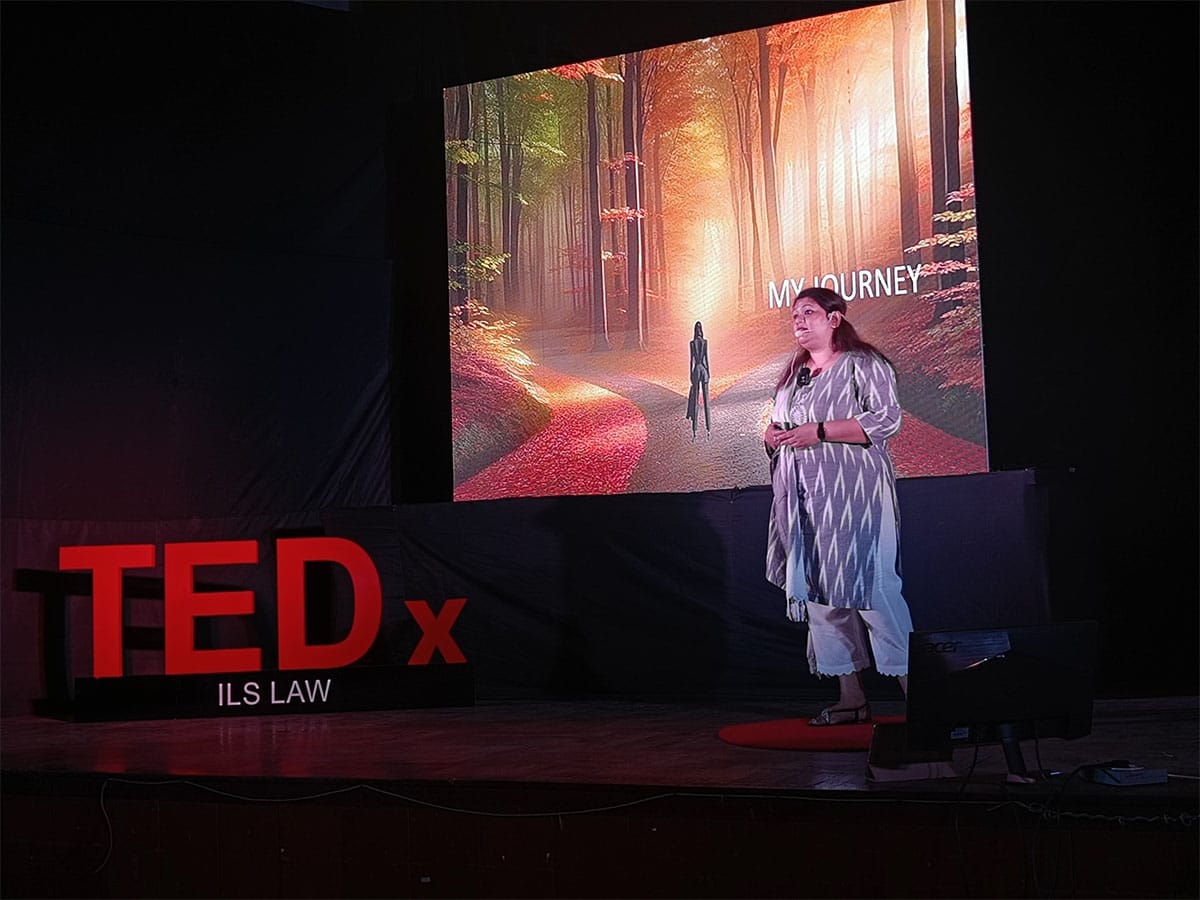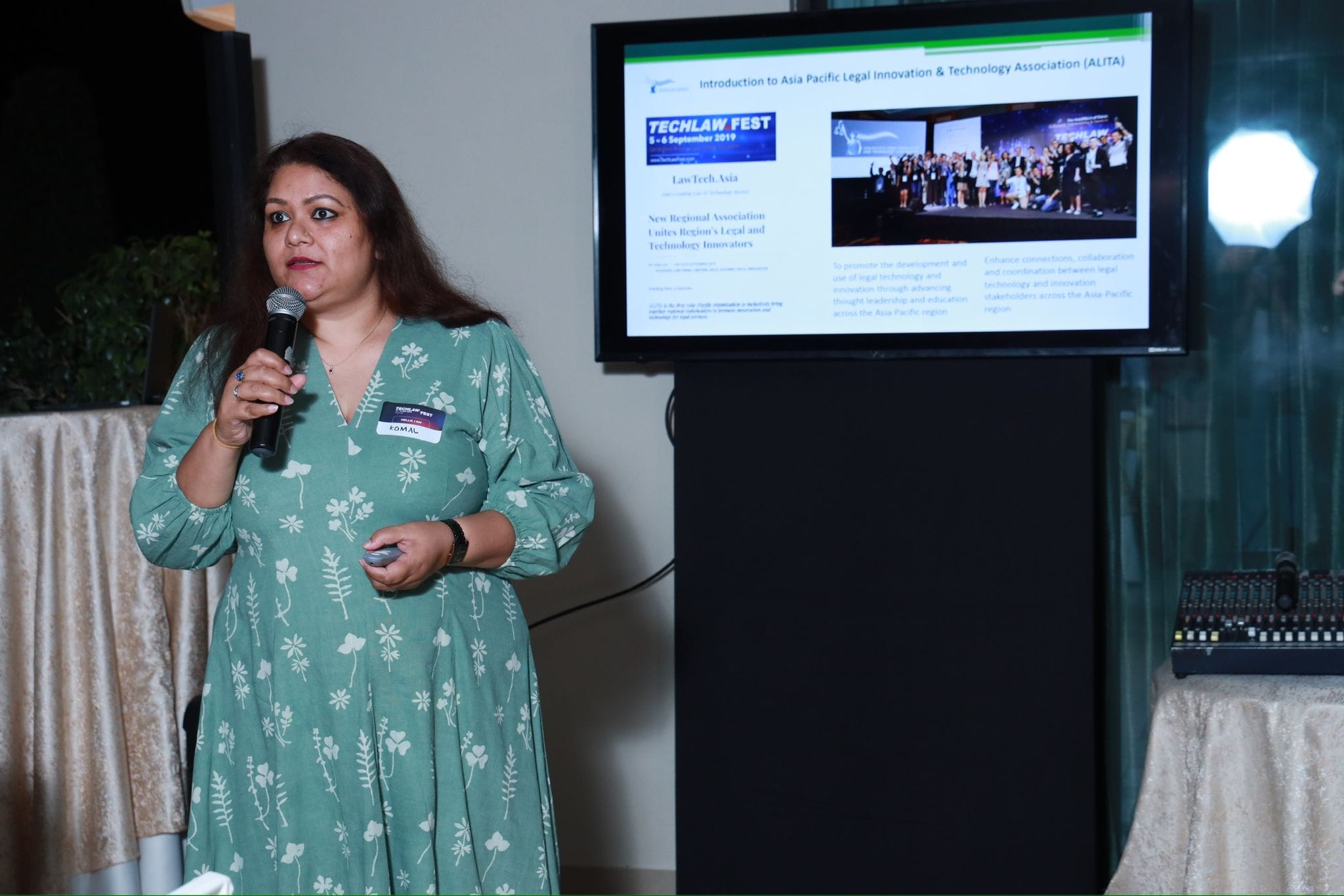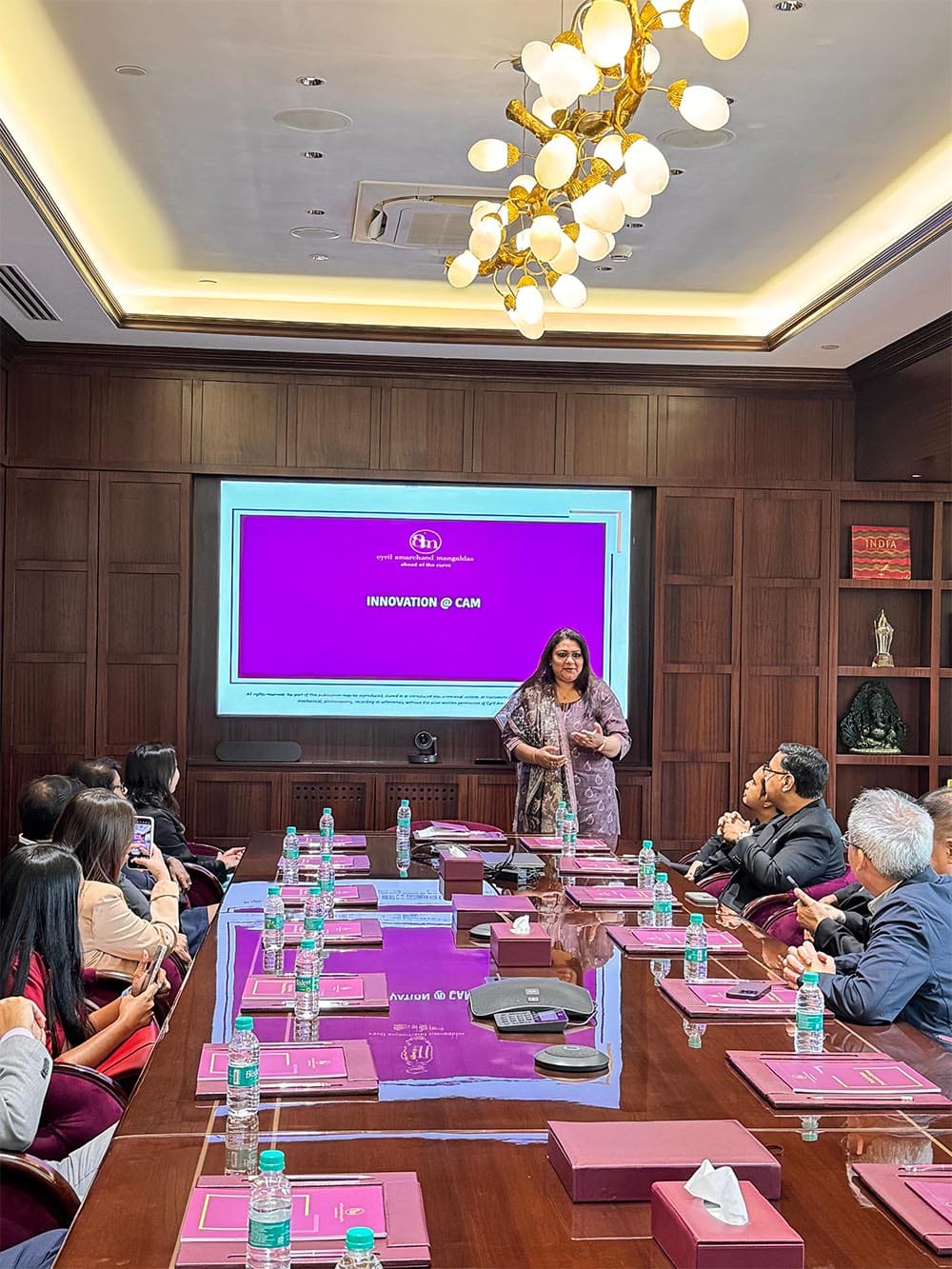
Komal’s Tips For Innovation In The Legal Space
Her advice on implementing realistic innovation goals to match a firm’s needs
BY MATHANGI ELANGOVAN
It was the very combination of law and technology that carved out the career for Komal Gupta who is now a board advisor for the Asia-Pacific Legal Innovation and Technology Association (ALITA). Her diverse experience in legal service delivery, training, business development and several other areas helped her carve out her career in the legal tech and innovation space.
Today, she’s the Chief Innovation Officer at Cyril Amarchand. With her experience and expertise in the legal tech space, here are some recommendations Komal shares on how law firms can integrate innovation into their work.
DRIVING A CULTURE OF INNOVATION
Komal advocates for in-house innovation programmes such as the one at CAM known as “Vichaar”, which translates to conception or ideation. This is an annual weeklong programme in which employees from all departments at CAM can share their ideas to solve particular issues they face in their day-to-day work life.
A simple project yet it yields a profound impact within the firm. Through this, employees can not only identify challenges at the workplace but also explore their creativity by brainstorming ideas that curb these challenges.

Pioneered in 2018, Vichaar has gone through 7 cycles. Over the years, as we’ve solved many problems through this program, the number of ideas that employees contribute has reduced but the quality of these ideas has become “concrete and impactful” according to Komal.
She highlights a key creation that came about through Vichaar, known as the Deal Analytics tool. This is an in-house developed app that reflects all transactions and closed deals made by the firm. Along with these, analysis are reflected through pie charts and various other graphs.
Another creation birthed through Vichaar is oneCAM, a digital platform that serves as a one-stop portal where administrative tasks can be done easily and knowledge information can be accessed by employees.
It is imperative to get your team talking about pain points and sharing ideas says Komal, who strongly believes that change can start within the organisation before it becomes widespread across the country.
DIFFERENTIATING INNOVATION IN SMALL VS BIG FIRMS
Jumping on the AI bandwagon is not necessary as Komal points at readily available solutions that firms can get hold of. She notes that buying technology is not difficult but rather assessing the technology and getting skilled people to implement it is the bigger challenge.
In both small and large law firms, the key to successful innovation lies in identifying the right use cases and focusing on essential technologies that bring real value. Whether the firm has a vast infrastructure or operates with a lean team, the approach should be the same – research, evaluate, select what meets the firm’s specific needs. Innovation isn’t about size, it is about adopting solutions that enhance efficiency and client service, tailored to the firm’s unique challenges and opportunities.
According to Komal, many vendors focus on large firms and clients, neglecting smaller ones. “They seek revenue from a few big clients but overlook the broader market. Vendors should consider the diverse needs of all their clients and strive for inclusivity,” she says.

She draws a parallel between technology and newspaper subscriptions, suggesting that for a legal research company aiming for widespread adoption among lawyers, affordability like that of a household newspaper is crucial. Conversely, if exclusivity is the goal, a pricing model like premium online newspaper subscriptions should be used. Thus, while encouraging inclusivity among vendors, she also urges both small and large firms to carefully weigh the cost benefits.
UNDERSTANDING INNOVATION VS INVENTION
Innovation is frequently misconstrued, she explains. “Many people believe innovation is synonymous with invention – the creation of something completely novel. Innovation is not about invention. It centers on enhancing what is already there. It involves discovering better methods, optimising processes, and increasing efficiency. Innovation is less about revolutionary breakthroughs and more about incremental changes that lead to substantial improvements in our work and service delivery.”

MANAGING USER EXPECTATIONS
She highlights that while some believe legal tech can do everything, including specialised tasks, its purpose is to simplify aspects like legal research, drafting, summarising documents, and eDiscovery, not to replace professionals.
ALITA AWARD
“Receiving the ALITA award is both, an honour and a testament to the importance of innovation in the legal profession. It inspires me to continue pushing boundaries and creating impactful solutions for both legal professionals and clients,” says Komal.
Moving forward, her goal is to foster a culture of innovation, collaboration, and technology driven transformation across the legal ecosystem, ensuring she remains agile and forward-thinking in an evolving world.
“Legal tech can boost your productivity, accuracy, and efficiency. However, remember that while technology offers many benefits, it also has limitations, which must be acknowledged.”
Note: SAL does not endorse any of the above-mentioned products

